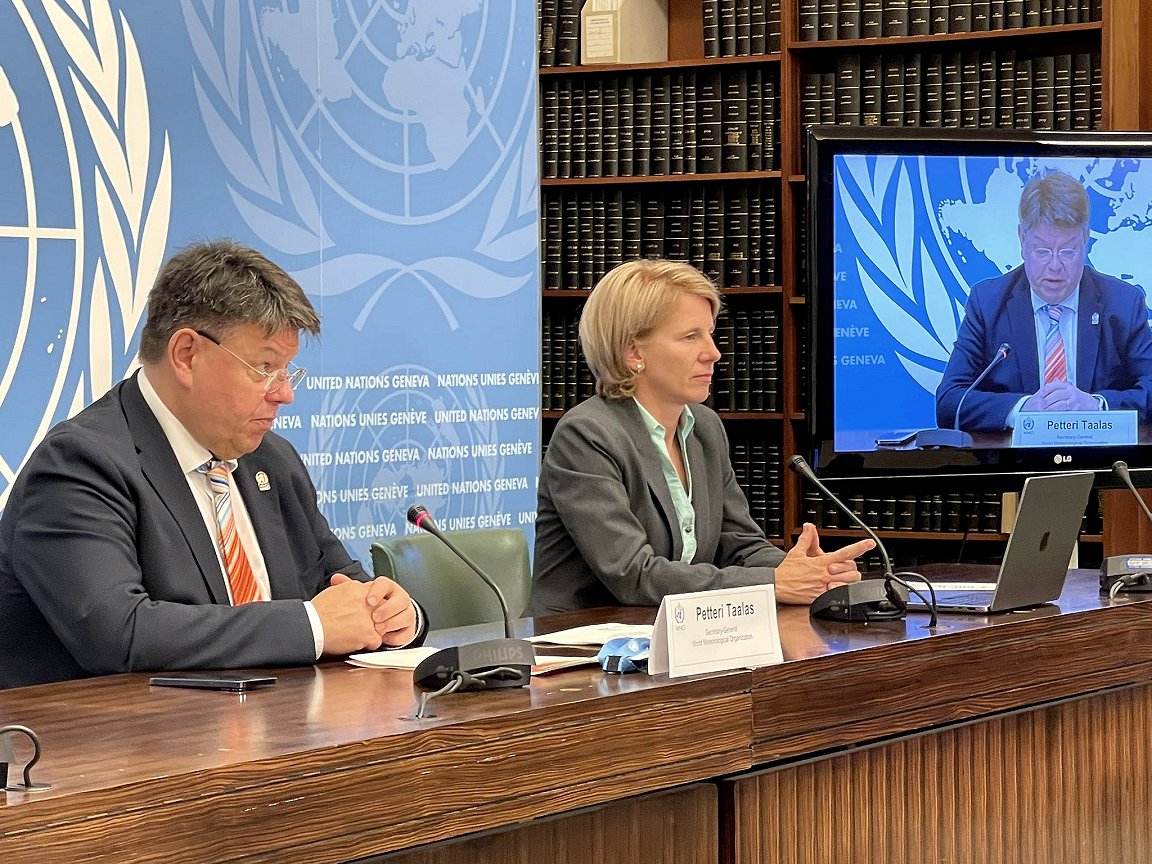
WMO global climate report: ‘Melting of some European glaciers literally off the charts’

By the Climate Centre
The State of the Global Climate 2022 report published by the World Meteorological Organization earlier today says that last year “hazardous climate and weather-related events drove new population displacement and worsened conditions for many of the 95 million people already living in displacement at the beginning of the year.”
WMO Secretary-General Petteri Taalas said that “continuous drought in East Africa, record-breaking rainfall in Pakistan and record-breaking heatwaves in China and Europe affected tens of millions, drove food insecurity, boosted mass migration, and cost billions of dollars”.
Undernourishment worldwide has been exacerbated by a combination of hydrometeorological impacts and the legacy of Covid-19, as well as protracted conflicts, according to a WMO summary of the report, which includes a story map aimed at policy-makers on how climate change indicators are playing out.
Among other records, the report finds “Antarctic sea ice fell to its lowest extent on record and the melting of some European glaciers was, literally, off the charts.”
The Alps “smashed records for glacier melt due to a combination of little winter snow, an intrusion of Saharan dust in March 2022, and heatwaves,” while for the first time in recorded history no snow survived the summer melt, even at the very highest measurement sites.
Superflood
Some of the WMO report’s other key points (see below for Europe):
*Global mean temperature in 2022 was 1.15°C above the 1850-1900 average, and the three main greenhouse gases reached record highs.
*The years 2015 to 2022 were the eighth warmest in the record back to 1850; 2022 was at least the sixth warmest year, despite an unusual three consecutive cooling La Niñas.
*Sea ice in Antarctica dropped to its lowest level on record, while in the Arctic at the end of summer it was equal-11th lowest in the satellite record.
*Ocean heat reached a new observed record in 2022, and sea levels reached a new high for the period of satellite altimetry since 1993.
*Rainfall has been below-average in five consecutive wet seasons in East Africa, the longest such sequence in 40 years, but record-breaking downpours rain in July and August led to a second superflood in Pakistan.
*China had its most extensive heatwave in the national record.
The Climate Centre’s Erin Coughlan de Perez, a Lead Author of the IPCC Working Group II report on global impacts, said late last month that its Synthesis Report was “a stark reminder of what we, the IFRC, as the world’s largest humanitarian network have been witnessing and warning of for years: climate change is driving humanitarian crises and human suffering around the world.”
She continued: “What is interesting about [the IPCC] report is that we usually talk about different parts of the climate crisis separately – reducing emissions, adapting to save lives, or responding to loss and damage.
The IPCC had effectively acknowledged, however, that “we need to do everything at once, and it gives a road map for how we can achieve this” through a call for a transformation to achieve climate-resilient development.
‘Heat stress’
The State of the Global Climate report comes the day after a report focused on the European climate from the Copernicus Climate Change Service (C3S) and incorporates input from it.
That report says Europe’s climate in Europe in 2022 was “marked by extreme heat and widespread drought”, experiencing a summer that was up to 0.4°C warmer on average than the previous warmest.
For some countries in south-west Europe, it was the warmest on record, according to the report from C3S, which is supported by the EU and implemented by the European Centre for Medium-Range Weather Forecasts.
“The highest temperatures in western Europe were about 10°C warmer than typical summer maximum temperatures. Southern Europe saw a record number of days with ‘very strong heat stress’,” it says.
The year was 10 per cent drier than average in Europe, and soil moisture was the second lowest in the last 50 years; the continent’s rivers were the driest on record, with 63 per cent experiencing below-average flows.
The WMO report puts excess deaths associated with the 2022 heat in Europe at more than 15,000 in total across (alphabetically) France, Germany, Portugal, Spain and the UK.
Climate Centre scientist Chris Jack, who works on forecast-based financing and anticipatory action, said today: “The long periods of unusually high temperatures in Europe in 2022 – including intense heatwaves generating levels of extreme physiological heat stress – are yet another red flag that climate change is not an impending disaster somewhere else but one that is very much here and now.”
WMO Secretary-General Petteri Taalas presents its State of the Global Climate 2022 report at the Palais des Nations in Geneva today, alongside Brigitte Perrin, Head of Strategic Communications. (Photo: WMO via social media)